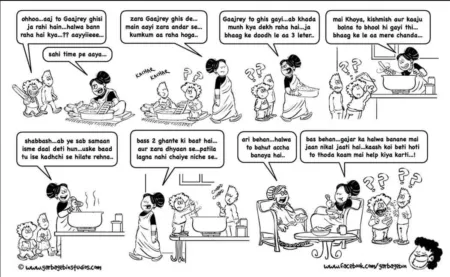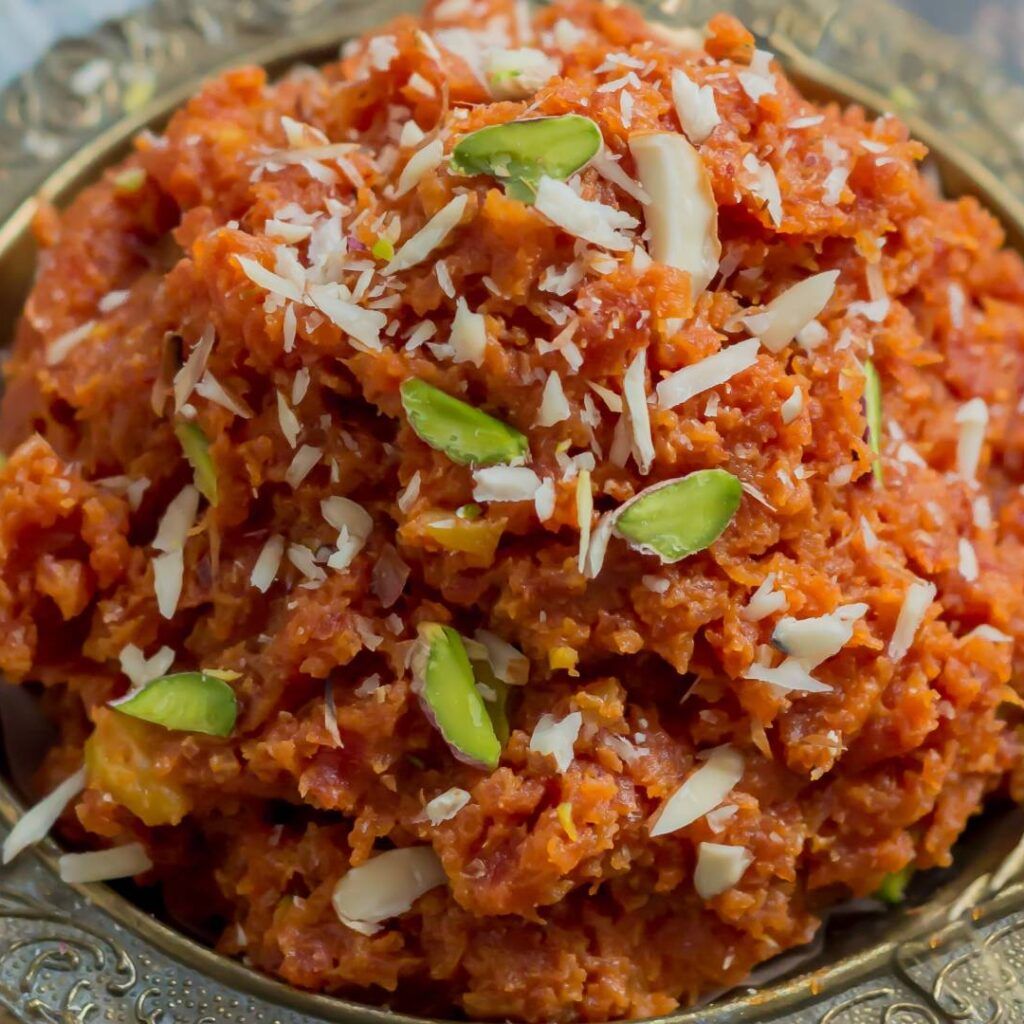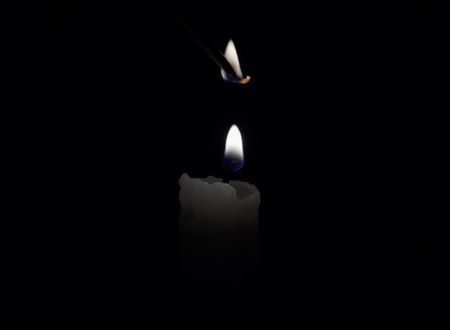Season’s second batch of gajar halwa is simmering on the gas stove as I type away. For the past three days, desi carrots (popularly called ‘Delhi Carrots’ in Hyderabad) have been waiting for my attention. We long for their arrival in winter. All year through, we get orange carrots. Though perfect for soups and savories, they are an absolute no-no for Gajar Halwa. Making Halwa tests your resolve. You have to decide how much you want it. One can take the easy route: grate the carrots, boil them, add condensed milk or khoya and sugar, and finish with a heavy garnish of nuts. Frankly, I have never tried this. Can the resultant dish even qualify for ‘Gajar ka Halwa’? I have my reservations. Purists like my mother, from whom I learned the traditional slow-cooking style of making sweets, would turn up their noses. For them, the process of Gajar Halwa is a crash course in patience. Short-cut cooking does not quite cut it.
Let’s go back to where we began—the kitchen shelf. So, a batch of slender, pink carrots waited to be metamorphosed. Mustering courage, I grated them while watching a few animations on YouTube, not something I usually do while cooking. However, I am glad I did that today, as I chanced upon a beautiful short movie about mothers’ food. The first few shots showed a mother slicing carrots while her young daughter stood by her side, marveling at the act of cooking. I was immediately hooked. What followed was a montage showcasing ebbs and falls in their relationship captured via time spent in the kitchen. As the daughter grows, her interactions, reactions, and food preferences change as well. From being a kiddo—with wide, wondering eyes— fed by the mother using innovative tactics, she becomes a critical teenager with little time and patience for food or her parent. Watch the movie for yourself to know how the story unfolds. I have provided the link at the end of my write-up.
The short movie planted the idea for this blog post. It made me question why I cook Gajar Halwa, Moong Dal Halwa, or Dahi wada on different occasions. What propels me to make these dishes every year despite the tedious process involved? Do I get solace from cooking, or is it plain conditioning? My husband jokes, “there is a marked difference in your energy and enthusiasm from the start to the finish of these dishes.” I hate to admit it, but he is right. I start joyfully. The long-drawn cooking process in the middle bogs me down. By the time I touch the finish line, I am exhausted. Then comes the tasting. Smiling faces of people who savor the dish make it all worthwhile: family, friends, neighbors, colleagues, and house help. I forget about the perseverance involved in slow cooking. It is the love and joy that I remember most. Perhaps that feeling nourishes my soul, and I get the courage to cook every year. But there is more to it. What is my strong connection with some of these food items? Consider the Gajar Halwa, for example. On the surface of it, I am investing a few hours in making a sweet delicacy. At a subconscious level, it is an effort to safeguard the joy, care, and warmth I had once received from a shared food experience in childhood. Probably I wish to relive and recreate that experience. Before I narrate further, do check out this hilarious take on the Gajar Halwa preparation (by the illustrators of Garbage Bin) straight from the 90s. I have tried including the image, but it is getting blurred. You can view it here.
 Gajar Halwa (Courtesy Garbage Bin)
Gajar Halwa (Courtesy Garbage Bin)
Once Upon a Time
I recall how during the late 80s and early 90s, my mother would source kerosene oil from the ration shop before the task of making halwa could be undertaken.
Those were different times. LPG was not to be wasted, therefore a kerosene stove. I remember the big cauldron—brimming with milk and grated carrots— placed on a stove that warmed up our kitchen in Delhi winters. Mom would go about with other chores, stirring the contents in the cauldron now and then. We were also instructed to do the stirring. My siblings and I would be huddled in the kitchen, often finishing our homework while keeping a keen eye on the halwa as it went through different stages of texture change. My sister waited for the time when it attained a kheer-like consistency. She preferred kheer over halwa. My brother and I had to wait till midnight. Bleary-eyed, we would come and go in the kitchen, demanding to know when the Halwa would be ready.
“Just a little longer. Good things take time.” Mummy would reassure us.
And just when we were on the verge of giving up, she would announce.
“Hey, come, it’s all done.”
Small steel plates (they are characteristically called ‘halwa plates in the North) with hot halwa were passed around to every member of the family. They savored the dish and praised the maker.
“Oh, how incomplete are winters without some batches of Gajar ka Halwa!” Truly, the test of a pudding lies in tasting
I wonder if the child inside me, though not listening intently, was imbibing something. While I forcibly ate the halwa at night, since I had waited for too long, I remember enjoying it far more the next day and thereafter. Every winter, we waited for mummy’s announcement about when she would make the halwa. Later, we started helping her with the preparations. We came to appreciate the weary but fruitful wait for the piping hot halwa—the final reward.
Food is an experience. It brings back memories of smells, textures, talks, and laughter. You may eat at the fanciest places in the world, but for some recipes, you must always come back home. At restaurants, the same dishes seem like apologies. Check out Gajar Halwa at fancy mithai shops; you’ll know what I mean.
So, despite the impending effort, I find myself veering toward making Gajar Halwa in winter and moong dal halwa for Diwali. My son has come to associate celebrations with traditional food. Hopefully, as he grows up, he will seek joy, love, and warmth in cooking. Maybe someday, longing for the familiar memory and taste, he will want to cook too.
Meanwhile, today I am waiting to see the broad smiles on my son’s and husband’s faces when they enter the house. The smell wafting in the air would betray the surprise!
By the by, here’s the short movie I promised.










Comments & Discussion
16 COMMENTS
Please login to read members' comments and participate in the discussion.